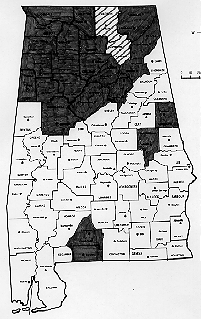 On January 9, 1861, the Mississippi legislature passed an Ordinance of Secession by 84 yeas to 15 nays. On the 10th the Florida convention took similar action by a vote of 62 yeas to 7 nays. On the 11th the Alabama convention voted for secession by 61 yeas to 39 yeas.
On January 9, 1861, the Mississippi legislature passed an Ordinance of Secession by 84 yeas to 15 nays. On the 10th the Florida convention took similar action by a vote of 62 yeas to 7 nays. On the 11th the Alabama convention voted for secession by 61 yeas to 39 yeas.
On the 19th, after an animated debate in which Alexander H. Stephens and Herschel V. Johnson, who had been the candidate on the Douglas ticket for Vice-President, opposed the measure, the Georgia convention passed an Ordinance of Secession by 208 yeas to 89 nays. The opponents of the ordinance accepted the decision of the convention, and Mr. Stephens was chosen later as Vice-President of the Southern Confederacy.
On the 26th the Louisiana convention passed an Ordinance of Secession by 103 yeas to 17 nays. It was charged that there had been fraud in the election of delegates to the convention, and the claim was made that the Union men were in a majority throughout the State. Accordingly it was proposed to submit the ordinance to the vote of the people. This proposition was voted down by 84 yeas to 45 nays.
In Texas, a State convention, called by the legislature, which, as we have seen, had met in unconstitutional assembly, passed an Ordinance of Secession on February 1, by a vote of 166 yeas to 7 nays. This was submitted to a popular vote and was ratified by a large majority.
Arkansas, North Carolina, Virginia, and Missouri held conventions in which the Union men were in a majority, and the secession of these States was thus postponed. The later secession of Missouri was the work of persons unauthorized by the Confederacy, and, though recognized by the Confederacy, was not legally valid even according to the theory of secession.
The Tennessee and Kentucky legislatures, being strongly Unionist, refused to call conventions.
Gov. Thomas H. Hicks, of Maryland, refused to convene the legislature of his State on the subject.
The legislature of Delaware, when urged by a comissioner from Mississippi to pass an Ordinance of Secession, gave the proposition an "unqualified disapproval."